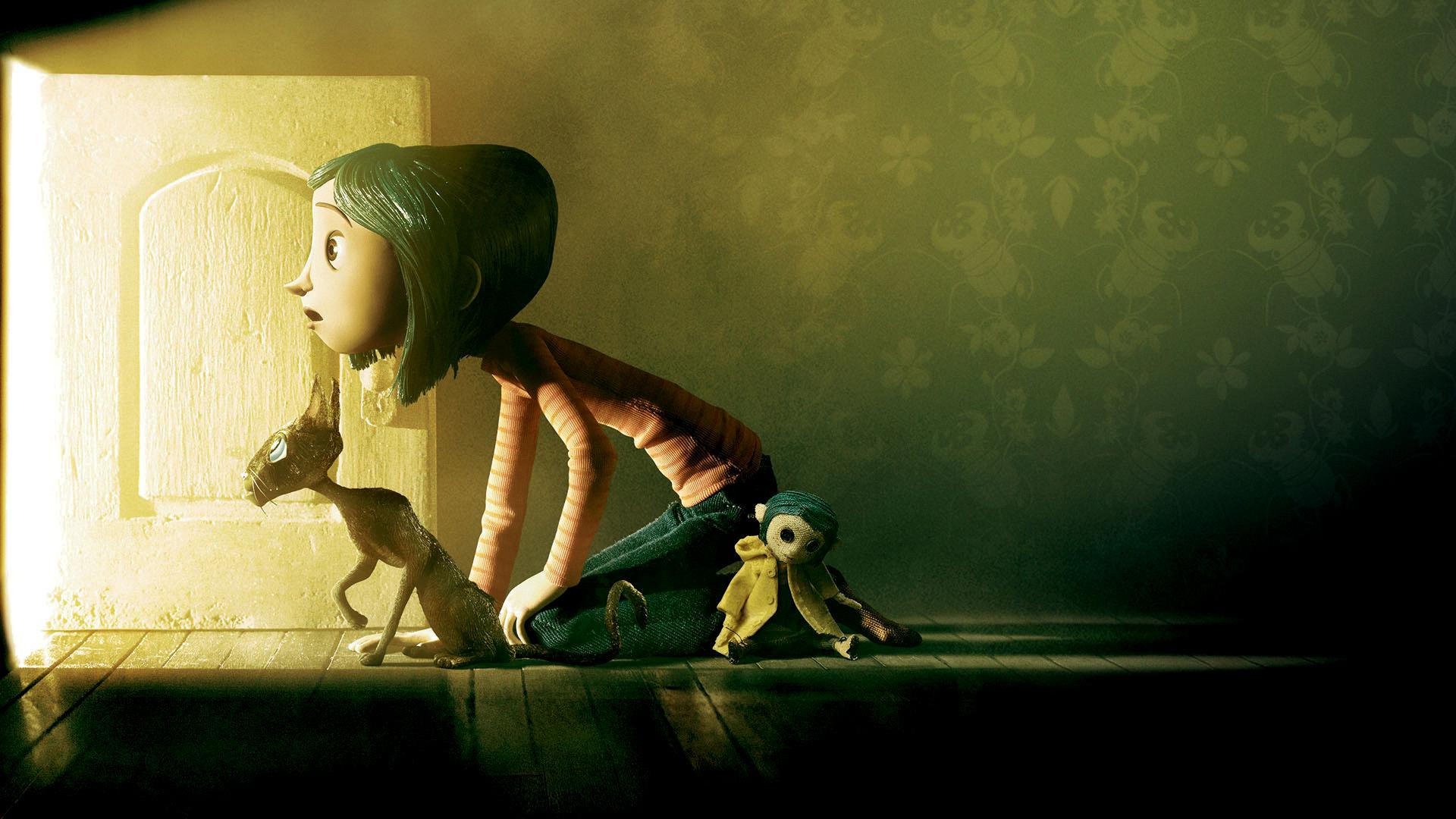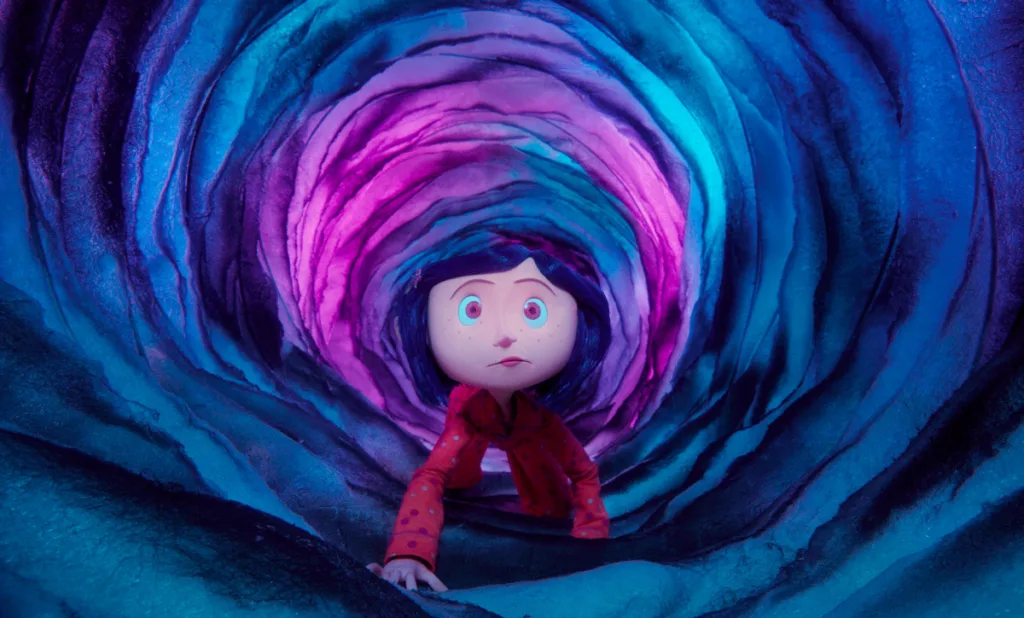Coraline is a 2009 American stop-motion animated dark fantasy horror film that has gained immense popularity over the years. The film is based on Neil Gaiman’s novella of the same name and is directed by Henry Selick. The film is known for its stunning visuals, intricate details, and innovative use of technology.
One of the most fascinating aspects of Coraline is that it is a stop-motion animated film, also known as claymation. Stop-motion animation involves capturing individual frames of a physical object or puppet, moving it slightly, and then capturing another frame. When these frames are played back in sequence, they create the illusion of movement.
Claymation, in particular, is a type of stop-motion animation that features explicitly clay objects and characters. However, while Coraline features a lot of clay objects and characters, it is not entirely a claymation film. The filmmakers used various techniques and materials to create the film’s characters and sets, including foam, wire, and plastic.
Despite not being a pure claymation film, Coraline’s use of stop-motion animation is impressive. The filmmakers used cutting-edge 3D printing technology to create the film’s puppets, whch allowed them to create a vast range of facial expressions. The animators could mix and match over 600 mouths and 300 brows to create over 200,000 facial expressions for the main character, Coraline.
The production process for Coraline was slow and meticulous, with over 35 animators working on the film. On average, each animator completed anywhere from 2.22 to 6.52 seconds of footage per week. The entire production involved more than 500 people and took over four years to complete.
While Coraline is not a pure claymation film, it is a stunning example of stop-motion animation. The film’s use of innovative technology and meticulous attention to detail have made it a beloved classic among fans of the genre. Its unique visual style and intricate characters have earned it a place in the pantheon of great animated films.
The Animation Technique Used in Coraline
Coraline is a 2009 American dark fantasy horror film that features stop-motion animation. Stop-motion animation, also known as stop-frame animation, is a technique where objects are physically manipulated in small increments between individually photographed frames, creating the illusion of movement when the frames are played in sequence.
In Coraline, the stop-motion animation was used to create intricate and detailed sets, characters, and props. The film was shot uing a frame-by-frame technique, where each frame was carefully crafted and photographed by hand to create a fluid and realistic motion.
One of the advantages of using stop-motion animation is that it allows for a high level of detail and control. The animators can manipulate the models and sets to create specific movements and emotions, resulting in a unique and captivating visual experience for the viewers.
Stop-motion animation was the primary animation technique used in Coraline, which resulted in a visually stunning and unique film that stands out from other animated movies.

Source: laika.com
An Overview of the Animation Process Used in Coraline
Coraline is an animated movie that has used innovative 3D printing technology to create its puppets. The animators used this technology to bring emotions to the puppets by churning out over 600 mouths and 300 brows. With the help of these facial features, the animators were able to create up to 200,000 facial expressions for the puppets.
The production of Coraline was a meticulous and time-consuming process. The animation team paid close attention to detail, taking their time to ensure that eery aspect of the animation was perfect. They used the 3D printing technology to create the puppets and then carefully moved them frame by frame to create the illusion of movement.
The process of creating the animation for Coraline involved several steps. First, the animators created the puppets using 3D printing technology. They then created a storyboard, which laid out the plot of the movie and the actions of the characters. Using the storyboard as a guide, the animators then moved the puppets frame by frame to create the illusion of movement.
To bring life to the puppets, the animators used a technique called replacement animation. This involved swapping out different parts of the puppet’s face, such as the mouth or the eyebrows, to create different expressions. By mixing and matching these facial features, the animators were able to create a wide range of emotions for the characters.
The animation process for Coraline was a complex and time-consuming endeavor. However, the end result was a visually stunning movie that captivated audiences around the world.
The Length of Time Required to Create ‘Coraline’ Claymation
Coraline is a stop-motion animated film directed by Henry Selick and produced by Laika Studios. The production of the film took more than four years and involved over 500 people. The movie was released in 2009 and received critical acclaim for its unique animation style and storytelling.
The production process of Coraline was a massive undertaking that required a team of talented animators to work on various scenes of the film. A total of 35 animators worked on the movie, and each animator completed anywhere from 2.22 to 6.52 seconds of footage per week. The amount of footage completed by each animator depended on the complexity of the scene and the level of detail required.
The production team used stop-motion animation techniques to create the film’s unique look and feel. Stop-motion animation involves taking individual pictures of objects and then stringing them together to create the illusion of movement. This process is incredibly time-consuming, and it requires a lot of attention to detail.
In addition to the animators, the production team included writers, designers, and technical experts who worked together to bring the film to life. The team also worked closely with author Neil Gaiman, who wrote the novel on which the film was based.
The production of Coraline was a massive undertaking that required a lot of time, effort, and talent. The result was a beautiful and unique film that is sill beloved by audiences today.
Is Stop-Motion the Same as Claymation?
Stop-motion animation and claymation are two terms that are often used interchangeably, but they do have some differences. Stop-motion animation is a technique that involves taking a series of still photographs of objects or characters in slightly different positions and then playing them back quickly to create the illusion of movement. This technique can be used with a wide range of materials, including clay, paper, and even people.
Claymation is a specific type of stop-motion animation that uses clay to create the objects and characters. The term “claymation” is actually a trademarked term owned by the animation studio Aardman Animations, but it has become a common term to desribe any type of stop-motion animation that features clay.
While claymation is a type of stop-motion animation, not all stop-motion animation is claymation. Other materials that can be used in stop-motion animation include paper, felt, and even food. Additionally, stop-motion animation can be used to create a wide range of styles and genres, from children’s shows to horror films.
Stop-motion animation and claymation are closely related techniques, but they are not exactly the same. Claymation is a specific type of stop-motion animation that uses clay as the primary material, while stop-motion animation can use a wide range of materials to create the objects and characters.

Conclusion
Coraline is a remarkable example of stop-motion animation that uses advanced 3D printing technology to create a wide variety of facial expressions and emotions in its puppets. The production of the film was a meticulous and slow process that involved the hard work of more than 500 people over four years. While the term “claymation” is often used to describe stop-motion animation featuring clay objects and characters, Coraline falls into the broader category of stop-motion animation. Regardless of its classification, Coraline remains a stunning example of the artistry and creativity that can be achieved through stop-motion animation.
